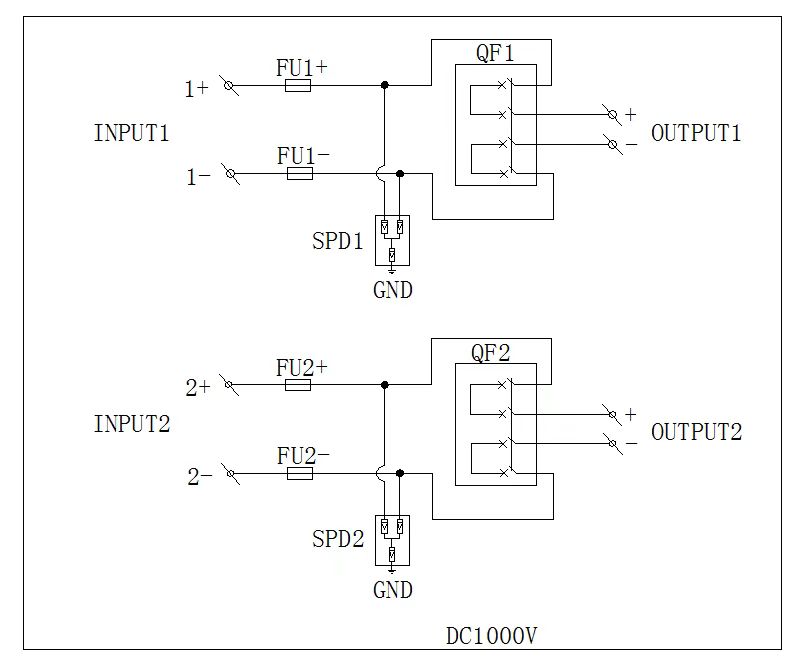PV Combiner Box: A Complete Installation and Maintenance Guide
A PV Combiner Box is one of the most important components in a solar photovoltaic (PV) system.
It acts as the central point where multiple strings of solar panels are combined into a single DC output that goes to the inverter.
Proper installation and maintenance of a PV combiner box not only improves system efficiency but also ensures the safety of the entire solar project.
1. What is a PV Combiner Box?
A PV combiner box, sometimes called a solar junction box, is used in solar power plants, commercial rooftop systems, and residential PV systems.
It houses protective devices such as fuses, surge protective devices (SPDs), circuit breakers, and monitoring equipment.
By consolidating multiple strings into one output, the combiner box reduces cabling complexity and makes system protection easier.
2. Why Proper Installation Matters
Incorrect installation of a PV combiner box can lead to problems such as overheating, energy losses, or even electrical fires.
A poorly installed combiner box may also allow water ingress, corrosion, or mechanical damage to the components inside.
Therefore, following industry standards and best practices is critical for both safety and efficiency.
3. Tools and Equipment Required for Installation
- Insulated screwdrivers and pliers
- Torque wrench (for correct tightening of connections)
- Multimeter and insulation resistance tester
- Cable stripping and crimping tools
- MC4 or other PV connectors
- Personal protective equipment (PPE) such as gloves and safety glasses
4. Step-by-Step PV Combiner Box Installation
Step 1: Site Assessment
Choose an installation location that is accessible, well-ventilated, and protected from direct exposure to extreme weather.
The box should be mounted on a wall or metallic frame close to the solar array, ensuring that DC cable runs are as short as possible.
Step 2: Mounting the Box
Secure the combiner box firmly using stainless steel bolts or anti-corrosive fasteners.
Ensure that the mounting surface is stable, and the box is positioned vertically to allow natural water drainage.
Step 3: Connecting PV Strings
Connect each string of solar panels into the combiner box using PV-rated cables.
Each string should be connected through a dedicated fuse or circuit breaker for overcurrent protection.
Step 4: Surge Protection Device (SPD) Integration
Install surge protective devices to safeguard the system from lightning and voltage spikes.
Connect the SPD correctly between positive, negative, and ground lines according to manufacturer instructions.
Step 5: DC Output Connection
After combining all strings, the DC output is routed through a main breaker before connecting to the inverter.
Make sure the polarity is correct to avoid inverter damage.
Step 6: Grounding and Bonding
Proper grounding is essential to ensure safety and compliance with electrical codes.
All metallic enclosures must be bonded to the system ground.
Step 7: Final Testing
Perform insulation resistance testing and polarity checks before energizing the system.
Verify that all connections are tightened according to torque specifications.
5. Maintenance Practices for PV Combiner Boxes
Regular maintenance ensures that the PV combiner box operates safely and efficiently throughout its lifetime.
Recommended practices include:
- Visual inspection: Look for discoloration, cracks, or loose connections.
- Thermal scanning: Use an infrared camera to detect hotspots.
- Cleaning: Remove dust, dirt, or insects that may block ventilation.
- Tightening connections: Retorque terminals periodically to avoid arcing.
- Testing SPD functionality: Replace surge protectors that have been triggered.
6. Common Installation Mistakes to Avoid
- Improper cable sizing leading to overheating
- Mixing up polarity of DC connections
- Not using UV-resistant outdoor cables
- Failure to ground the enclosure properly
- Over-tightening or under-tightening connections
- Neglecting water ingress protection
7. Troubleshooting PV Combiner Box Issues
Even with careful installation, problems may arise over time. Some common issues include:
Overheating
Caused by loose connections or undersized cables. Solution: retighten and use proper cable sizing.
Blown Fuses
Indicates short circuits or string imbalance. Solution: identify faulty string and replace damaged components.
SPD Failure
Occurs after repeated lightning strikes or surges. Solution: replace SPD modules immediately.
Water Leakage
Caused by poor sealing or damaged gaskets. Solution: re-seal or replace the enclosure.
8. International Standards and Compliance
PV combiner boxes must comply with international standards such as:
- IEC 61439 (Low-voltage switchgear and controlgear assemblies)
- IEC 60364 (Electrical installations of buildings)
- UL 1741 (Standard for inverters, converters, and controllers for use in independent power systems)
- NEC Article 690 (Solar photovoltaic systems, USA)
9. Safety Tips During Installation and Maintenance
- Always work with the system powered down.
- Wear insulated gloves and eye protection.
- Use lock-out tag-out (LOTO) procedures before servicing.
- Do not bypass protective devices.
- Ensure proper ventilation inside the box.
10. Future Trends in PV Combiner Boxes
Modern PV combiner boxes are evolving with smart monitoring capabilities.
Future designs include IoT-enabled sensors that allow real-time monitoring of string currents, voltages, and SPD status.
This trend will enhance predictive maintenance and system reliability in large-scale solar projects.
Conclusion
Proper installation and maintenance of a PV combiner box is essential for ensuring solar system efficiency, reliability, and safety.
By following the steps in this guide, solar engineers and installers can avoid common mistakes, meet compliance requirements, and extend the lifespan of their PV systems.
Whether you are setting up a small residential rooftop project or managing a utility-scale solar farm, investing in the correct installation and regular maintenance of your PV combiner box is one of the most important steps to achieve long-term energy success.



